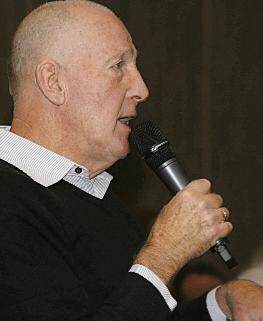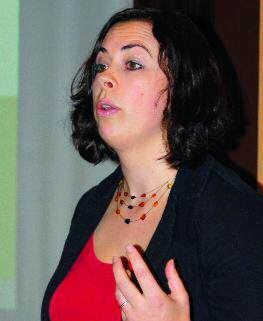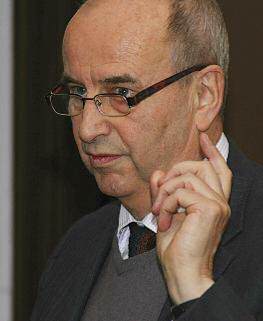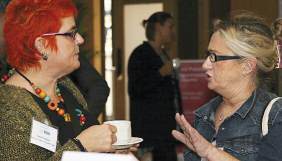Basic HTML Version





















Adfam/DDN conference |
Families First
December 2013 |
drinkanddrugsnews
| 9
www.drinkanddrugsnews.com
adults in the UK were affected by a relative’s drug use, but other studies put this
number closer to 8m, she said. Whatever the figure, there was no doubt of the
significant negative impact on physical and mental health, emotional wellbeing,
family relationships and finances, and the health and wellbeing of any children
involved.
The workshop group brought family members and carers into discussion with
practitioners, and the conversation frequently became impassioned as carers
brought their day-to-day tensions to the group.
‘I don’t hate my son, but I hate what he does,’ said a mother. ‘It helps me to
go to the support group. I hadn’t really thought of myself as a carer till today –
I’m his mum. My group takes us away on days, such as spa days, and I think
“why am I here? Because my son’s a drug addict.”’
‘My son was on drugs for nine years before I knew about support,’ said
another mother, highlighting how far family support still needed to go.
‘So how can we encourage people to access support for themselves?’ asked
Su Bartlett. The Adfam stigma campaign would help to show that carers had a
right to get angry and give them the way forward to deal with a lot of internal
processes, said Esther Harris, an independent practitioner.
‘A lot of parents believe it’s their fault, and this erodes the belief that they
deserve something for themselves.’
Adfam’s Kate Peake addressed the issue of stigma at a plenary session later
in the day and explained the charity’s ‘Speak Out’ campaign.
‘It’s about telling the world this can happen to anyone,’ she said. This isn’t an
additional extra, it’s intrinsically related to the main agenda. It’s about regaining
humanity for family members.’
Family members were not comfortable talking about their issues, but could be
encouraged to share, she said. Illustrating her point with an account of
organising a flash mob with a carers’ network in Tyne and Wear, she said the
important message to convey was that ‘things can and do get better’. This local
initiative had enabled the participants to give out the message that ‘family
members need support and here’s where you can get it’.
‘There’s still stigma, but there are huge changes and we need to learn from
that,’ she said. ‘We have to take small steps.’
‘Alcohol often gets left behind
when people talk about
substance misuse,’ said
Alcohol Concern’s workshop
programme manager, Lauren
Booker, in a session about
alcohol and families.
While alcohol had always received
less money for services, people who
gave up class A drugs often turned to
alcohol, using it as a replacement,
Lauren Booker explained. Roughly 1m
children lived in a household with one
or more dependent drinkers and
almost a fifth of the population were
affected by the alcohol use of family
members.
The most common question asked
by relations and friends of people
with alcohol problems was ‘What can
I do to help?’ While the World Health
Organization defined dependence as
‘when alcohol affects physical,
emotional and social functions’, it
also applied to the functions of those
around someone who struggled with
alcohol issues.
During the workshop, case studies
were given to groups describing a
family of five with two parents who
drank the same amount of alcohol per
week (over the recommended number
of units) but in different social and
economic situations. Groups were
asked to give examples of the effect of
alcohol on the families – depression,
break-up of the family, abuse, bad
influences on the children leading to
trouble at school or with the police,
problems with household budget and
negative impact on careers.
It was agreed that drinking affected
every family differently and that there
was no ‘standard’ pattern of what
would happen. The environment
surrounding the family and alcohol
users had a big impact – it was never
cut and dried. Alcohol was a short-term
coping method, but caused more
problems in the long term.
Participants discussed what could
be done to help families who were
experiencing alcohol misuse. The ideal
was to catch it early before problems
became serious. Failing that, what was
necessary was early identification,
assessment and referral pathways,
coupled with better multi-agency
working.
Effective approaches to helping
family members included online
forums, recovery communities, and
workplace counselling and referrals. It
was essential to know what different
services were available and to
recognise that treatment did not
necessarily mean abstinence.
Alcohol was all around us, in our
society, community and families, said
Lauren Booker, and there was a lot we
could do about alcohol-related harm.
However, it would be a slow process, in
the same way that society eventually
began to realise that tobacco was
harmful and the culture around it
changed.
‘We are at the start of a long-term
mission to change the way the nation
drinks,’ she said.
Clockwise from left:
Vivienne Evans, Adfam; Claire
Robinson, PROPS North East;
John, Al-Anon;
Kate Peake, Adfam;
Nick Barton, Action on Addiction;
Sarah Rigden, Wiltshire Addiction
Support Project;
Una Gordon, DHI
DRINKING AFFECTS
EVERY FAMILY
DIFFERENTLY

